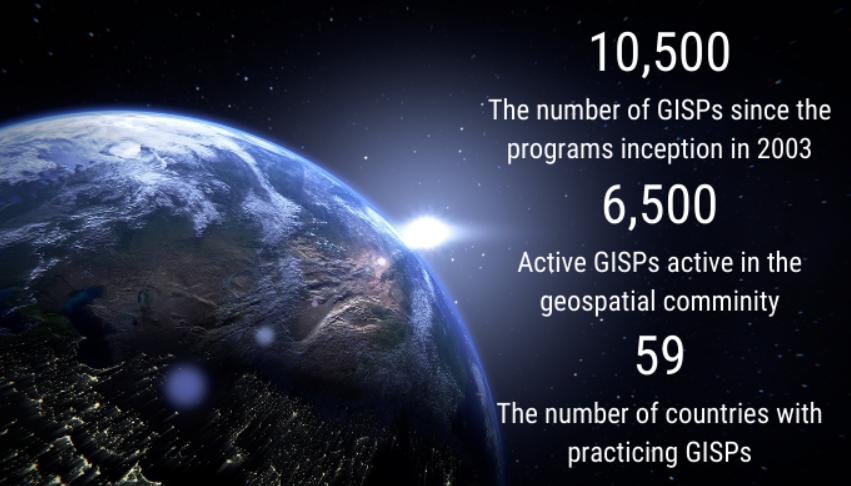
GISP Certificate: What You Should Know
GISP Certification is a recognized credential that sets the benchmark for skills in the geographic information systems technology field.
It not only considers your educational background but also assesses your experience and contributions to the GIS community.
As such, GIS professionals who want to advance their careers in their field should consider taking the GISP certification.
This article will help you understand the criteria for GISP certification and the value of getting this certification.
READ MORE: GIS Certification: Is It Worth It?
What is GISP Certification?
The GISP certification is a designation that allows professionals in the field of geospatial technologies to demonstrate their expertise and competency in areas of study and work.
In 2004, the GIS Certification Institute (GISCI) started the GIS Professional (GISP) certification program. Ever since there have been 10,500 individuals certified through the GISP designation program with 5,500 active members.
Recently, the GISCI initiated the GISP Retired Designation (GISP-R) for any current GISPs who want to continue their designation into retirement. However, there are no figures available for the amount of uptake into the GISP-R certification yet.

Criteria for GISP Designation
The criteria are much more stringent for GISP compared to other types of certification because it not only tests education. But you have to reach a minimum duration for experience and contributions as well. Here are the criteria for GISP designation:
- EXPERIENCE: You require a minimum of at least 4 years of full-time experience in the field of GIS.
- EDUCATION: You will have to confirm the amount of formal education experience including degree, certification, accredited courses, and non-accredited courses.
- CONTRIBUTIONS: You are expected to contribute to the GIS community including presentations, journal articles, and volunteering.
- EXAMINATION: You will have to pass the GISCI Geospatial Core Technical Knowledge Exam.
Once you have completed the 4 criteria above, you will have to provide a fee so the GISCI can verify your meet the requirements. Once GISCI confirms you have obtained the list of requirements, you can earn your GISP designation.
But once you receive designation as a GISP, you have to keep in mind that it is only valid for a three-year period. To maintain your designation, you will have to continue re-certifying yourself ensuring you have the 4 required criteria.
Is a GISP Certificate Worth It?
Before we discuss if it’s worth it, is a GISP really an option for everyone? It’s impossible for any recent graduate to be a GISP because it demands 4 years of full-time experience in the field of GIS with contributions to the community.
Most graduates are just looking for a job so you have to understand that the GISP designation is not valid if you’re just starting out. The overly stringent criteria seem like a bit of a flaw and there should be a way to involve new graduates, who are like the lifeblood of a GIS community
But if you do have the necessary experience and contributions, I think the GISP certification will help you stand out from the crowd. If you’re looking to climb the GIS career ladder, it can show hiring managers that you are an authority on the latest GIS software and techniques.
The GISP Title
A GISP designation shows that you have the knowledge, skills, and abilities to work as a professional at the cutting-edge of the field.
Currently, there are 5,500 active members as GIS Professionals with the bulk in the United States and Canada.
Just like any designation, you can attach it to your title as a sign of knowledge and status in the field of GIS.
For example, one notable GIS Professional is an author and geospatial evangelist Joseph Kerski. If you are an active member, you can use the title “GISP” such as Joseph Kerski, Ph.D., GISP.





